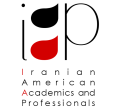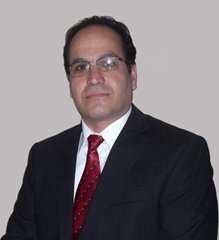Where: Montgomery Community College (Rockville Campus) – Humanity Building (HU), Conference Room 009 (Get Directions, Campus Map )
Language: Farsi

Synopsis:
Transplantation in the medical field is a relatively new and first kidney transplant took place in the 1950s. As living with one functioning kidney was not deemed life-threatening, initially there were live-donor transplants from relatives, but soon cadaveric transplants became the norm. Today the procedure has become much more common and while rejection is still an issue, many types of medication are available to limit and even reverse certain complications. In addition, while friends and family are often the source for donor kidneys, the role of UNOS (United Network for Organ Sharing) cannot be overlooked in helping with the matching process across the world. Much progress has been made in the field which led to transplantation of other organs, mainly the pancreas and liver. Transplants extend life and while the procedure is often successful, research is still being done to see whether xenotransplation (cells, tissues, and organs of different species) can be tolerated and provide even greater results.
About the Speaker:
Dr. Mohammad R. Alijani is a retired Professor of Surgery at Georgetown University. He is the founder and the former Chairman of nonprofit organization Persia Foundation, President and Medical Director of IBN SINA Health Foundation of North America (ISHFNA), and one of the founders of IBN SINA Health Foundation of North America (ISHFNA).
Dr. Alijani was an Assistant Professor and Assistant Chief of Organ Transplant Services (USUHS) at the Walter Reed Army Medical Center (WRAMC) in Washington DC during 1979-1980, an Associate Professor of Surgery at Georgetown University during 1988-1993, and a Professor of Surgery at Georgetown University Hospital during 1993-1999.
At Georgetown University he was appointed Director of Kidney and Pancreas Transplant Division in the Department of Surgery during 1987-1999. Under his directorship, the Pancreas Transplant program in Georgetown Medical Center received approval by UNOS, based on patient and graft survival rate in November 1992. He performed the first whole pancreas duodenal and kidney transplant in Washington D.C. at Georgetown University Hospital on July 14, 1989. The patient is still alive and requires no insulin or dialysis as of July 2012. Also, under his directorship, Georgetown University Hospital Kidney Transplant Program was rated in the top 10 centers in the U.S.A. for graft and patient survival rates by the U.S. Department of Health and Human Services in 1991 and 1994.
Dr. Alijani has received numerous awards and distinctions including Certification of outstanding service and commitment by the Iranian Medical Society in Los Angeles CA in 1996, Certificate of Outstanding Service as a Member at Large by the Ad Hoc International Relations Committee of the United Network for Organ Sharing (UNOS) during 1994-1996, Certificate of Outstanding Achievement from the Department of Army Medical Center in 1980, and Certificate of Outstanding Achievement from the Minister of Health for standing first in caring for patients on active duty in Iran during 1963- 1965. His outstanding committee membership and appointments include Georgetown University Hospital’s CME Review and Development Committee during 1993-1999, Board of Directors at the National Kidney Foundation during 1992- 1998, Washington Regional Transplant Consortium (WRTC) OPO/MAC Committee during 1988-1998, United Network for Organ Sharing (UNOS) International Relation Committee during 1989- 1998, Professional Advisory Board at the National Kidney Foundation during 1988-1993, Total Quality Improvement Committee of the WRTC in 1993, National Kidney Foundation Research Committee during 1988- 1992, Chairman of the Medical Advisory Committee at the Washington Regional Transplant Consortium (WRTC during 1989- 1990, Membership Committee of the American Society of Transplant Surgeons during 1986-1989, Chairman of the Subcommittee in WRTC Renal/Pancreas in 1989, President of Washington Area Transplant Society (WATS) during 1986-1987. His society membership and affiliations include American Society of Transplant Surgeons (ASTS), International Transplantation Society (ITS), Association for Academic Surgery (AAS), American College of Surgeons (ACS), International College of Surgeons (ICS), American Medical Association (AMA), South-Eastern Organ Procurement Foundation (SEOPF), National Kidney Foundation (NKF), United Network for Organ Sharing (UNOS), Medical Society of the District of Columbia.
Dr. Alijani educational background includes the MD degree from Tabriz Medical School in 1963, Surgical Resident and Chief Resident at Tehran University during 1965- 1970, Internship in Surgical Resident at the Providence Hospital in Washington, DC during 1971-1976, and Chief Surgical Resident & Organ Transplant Fellow at the University of Iowa Hospital during 1976- 1977. He has participated in numerous continuing medical education programs including Molecular and Cellular Mechanisms of Immunity at NIH in 1982, General Surgery Board Review Course at Osler Institute in1991, Immunosuppressive Drug Development and Transplantation Science Course at the FDA Staff College in 1992, and postgraduate courses in Xenotransplantation, Clinical Immunosuppressions update, Molecular and Cellular Basis of Allorecognition, Viral Infection, and Future Strategies for Immune Intervention by the American Society of Transplant Surgeons (ASTS) in 1993 and 1994.
Dr. Alijani has an outstanding record of publication and presentation in scientific journals and conferences including contributing authorship in 10 books, publication of over 50 archival journal papers and over 30 presentations in scientific conferences and meetings. He has served as Moderator for meeting and conferences such as First Annual Transplant Consortium of the District of Columbia in 1986, Annual Alexis Carrel Conference in 1987, Updating Combined Pancreas and Kidney Transplant at the Iranian Medical Society in 1996, Fourth International Society for Organ Sharing Congress in 1997, and as Chairman for The Fifth Annual Research Symposium at the Washington Area Transplant Society and the Maryland Transplant Forum in 1987.
Fee (including dinner): $5 Students, $15 Public
Please click here to RSVP.


